|
“It’s 11:11… make a wish!” Have you heard of that phrase before? I roll my eyes every time someone eagerly pauses in that moment, thinking that whatever they wish for will magically appear. Though superstitions like this detract from actual prayer, the idea of praying a daily devotion has a long history in the Church. Prayers like the Angelus, a Marian devotion that commemorates the Incarnation, have been around since at least the Middle Ages. Often prayed at noon, the devotional provides the faithful with an opportunity to re-focus and recommit their days to Christ.
Marian devotions in particular can help us grow closer to Christ because Christ himself dedicated Mary to us after his death. When Jesus said, “Woman, behold your son. Son, behold your Mother,” he was providing Mary as an intercessor for us. After Jesus’ death, the Acts of the Apostles records her as being present when the disciples gathered at Jesus’ Ascension and then later in the Upper Room during the Descent of the Holy Spirit. Because of Mary’s continual intercession for the followers of her Son and because of her role serving with the Apostles on earth, she has historically been known as the Queen of Apostles. As tradition goes, it is Mary who bolstered the Apostles in moments of discouragement and fear after the death and Resurrection of Christ. Prayers to Our Blessed Mother never go unanswered. As a personal devotion to her, I offer up a Hail Mary for my vocation every time I see an 11 on the clock. I like to pray when I see the number in order to turn the superstitious ‘11:11 practice’ into something for the glory of God; you could pray when you first wake up, or at noon like those who pray the Angelus, or during your commute to work or school. Daily devotions are flexible! The important part is to make sure that you are checking in with our Heavenly Father every day. In particular, praying with Mary encourages us to adopt as our own her obedience and love for the Father. And of course, Mary is never outdone in generosity, and her intercession to Jesus is the most powerful of all. I encourage you to begin a daily devotion of your own. It can be for your vocation, for a personal trial, for someone else – for whatever is on your heart that day. My prayer for my vocation was inspired by a friend who made a daily offering of prayer for her future husband and is now married and has four beautiful babies. She told me her life wasn’t always pointed straight to God’s will, and how she grew up neglecting her Catholic faith. As she grew older, she knew that her soul was yearning for something to grasp, to hold onto, to fill the void in her heart. She decided to go to adoration, and was inspired through prayer to begin a daily devotion to Christ through Mary. That devotion she made fifteen years ago to Our Mother changed her heart and her life. I pray that you also will be inspired to take up a daily devotion to Our Mother, who so graciously hears our intercessions and carries them to her son. As I pray each day this devotion, I will pray for you, and this journey to Heaven that we are taking together. Question for Reflection: What do my daily devotions look like? What is an easy moment in the day that I can take some time to pray to Our Mother for guidance and intercession? Kathleen O’Reilly is a senior at Saint Vincent College in Latrobe, Pennsylvania.
1 Comment
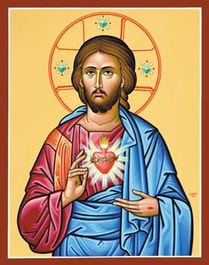 Whenever you think of Christianity, it is next to impossible to overlook the role and importance of love in the story of salvation. God’s love for us is one that is infinitely more enduring than any infatuation or passing attraction. It is one that gives and purifies, sacrifices and yields for the good of another -- again and again and again. God’s love is one that extends through, before, and beyond eternity and is ultimately expressed from Calvary to each and every person, fully, freely, and forever. The Church has dedicated the month of June to a reminder of the depth of God’s love: the devotion to the Sacred Heart of Jesus. In His Most Sacred Heart, we see how absolutely consumed with love God is for us — so much so that He was willing to bear those heinous wounds, false accusations and derisions, and even His death in order to grant salvation for all. Artistic depictions of the Sacred Heart remind us of the torment Christ endured on our behalf: the heart is wrapped in a crown of thorns, pierced, bleeding, and aflame with a cross rising from the tongues of fire. The visible wounds of Christ’s heart reveal His invisible love. Thus, devotion to the Sacred Heart is described as “devotion to the love of Jesus Christ in so far as this love is recalled and symbolically represented to us by His Heart of Flesh.” As creatures that have both soul and body, bodily representations of Christ’s love sometimes touch us in ways that words do not. The Sacred Heart teaches us that authentic love incurs great costs, but it also always gives life. Historically, devotion to the Sacred Heart is believed to have grown from another devotion to Jesus’ body: the Sacred Wounds of Christ from His Passion. Saint Bernard of Clairvaux said that the piercing of Christ’s side revealed His goodness and the charity of His heart for us: “How good and pleasant it is to dwell in the Heart of Jesus! Who is there who does not love a Heart so wounded? Who can refuse a return of love to a Heart so loving?” Other religious and saints, such as Francis of Assisi, have themselves exemplified closeness to the love poured out by Christ’s Five Wounds and Sacred Heart. The devotion as it is most commonly known today is said to have begun with the 1673 appearance of our Lord to St. Margaret Mary Alacoque, a French nun of the Order of the Visitation of Holy Mary. Over a series of visits, Our Lord revealed to St. Margaret Mary the importance of devotion to His Sacred Heart: "Behold the Heart which has so loved men that it has spared nothing, even to exhausting and consuming Itself, in order to testify Its love … But what I feel most keenly is that it is hearts which are consecrated to Me, that treat Me thus. Therefore, I ask of you that the Friday after the Octave of Corpus Christi be set apart for a special Feast to honor My Heart, by communicating on that day, and making reparation to It by a solemn act, in order to make amends for the indignities which It has received during the time It has been exposed on the altars. I promise you that My Heart shall expand Itself to shed in abundance the influence of Its Divine Love upon those who shall thus honor It, and cause It to be honored." In 1856, the Solemnity of the Sacred Heart was officially added to the liturgical calendar — the day before the Memorial of the Immaculate Heart of the Blessed Virgin Mary. The faithful have several options for honoring the Sacred Heart as requested by our Lord:
The Love that Christ continually showers on us should totally consume us. Christ’s death is an infinitely huge debt that we can never repay—but in His infinitely huge capacity to love and be merciful, all our Lord asks in return is our love. As we are invited to share in His Divine Love, we are called to let that love change us to become better disciples and better witnesses. Most of all, let us strive to become authors of great love stories, never ceasing to wonder at the incredible truth that the God of the Universe loves us! The Solemnity of the Most Sacred Heart is also the World Day of Prayer for the Sanctification of Priests. Please pray for the priests in your parish and any other priests who have touched your life!  This past winter, as I knelt in prayer at the tomb of the Blessed Elisabetta Sanna, I experienced a great sense of peace. I also felt a profound connection to this holy woman, who is largely unknown in the United States. I was blessed to be in Rome on a pilgrimage with a few great friends during our university’s winter break. Before embarking on the pilgrimage, my thoughts chiefly centered on finishing final exams and looking forward to having the opportunity to pray with Pope Francis at St. Peter’s Basilica. This opportunity with the Holy Father ended up becoming a moment I will always treasure. Yet, as I reflect back on the pilgrimage, it is clear that my encounter with the Venerable Elisabetta Sanna in the small Church of San Salvatore in Onda left the greatest mark on my spiritual life. Born in 1788, Elisabetta Sanna grew up in Sardinia. When only three months old, Elisabetta contracted smallpox, a disease that left her physically handicap for the rest of her life. Despite her disability, Elisabetta married and had seven children. She became well known in her town for devoting herself to the catechetical education of youth. Elisabetta also educated women from the town in basic Christian doctrine. After her husband died in 1825, Elisabetta decided to make a pilgrimage to the Holy Land and entrusted her children to the care of her mother and brother. Though she started her pilgrimage, Elisabetta never made it to the Holy Land, instead going to Rome. It was in Rome that she met a humble priest with a bold vision proclaiming that all the baptized were called to be apostles. This priest, Fr. Vincent Pallotti, would become her spiritual director, as well as a saint. He was canonized on January 20th, 1963 by Pope John XXIII. While Elisabetta planned on returning to her children in Sardinia, her physical disability prevented her from travelling back. Hence, while understandably upset, Elisabetta remained in Rome and continued to selflessly serve others in collaboration with Fr. Vincent Pallotti. In addition to performing multiple works of mercy, such as visiting the terminally ill, Elisabetta’s life was rooted in prayer. Both Sacred Scripture and the Holy Mass gave her the ability to be the face of Christ to the marginalized. In other words, Elisabetta’s love for Jesus Christ, which was grounded in her personal prayer, impelled her to the apostolate. What I find so remarkable and inspiring about Elisabetta’s life is that her path towards holiness appears so un-extraordinary. She was not the founder of a religious community, nor did she author a great theological treatise. Yet, it is exactly the ordinariness of her life that makes her so extraordinary. Elisabetta’s life is important because it demonstrates that God calls each one of us, in whatever place, in whatever situation, to be apostles. If you begin to doubt your ability to do great things for Jesus, look to the example of Elisabetta. I invite you to pray for her intercession and ask her to assist you in living out your vocation to be an apostle. For more resources on the Blessed Elisabetta Sanna, click here. Editors Note: This blog post was originally published on July 7, 2016 and Elisabetta Sanna was beatified on September 17, 2016. At some point during my time as a college student, I encountered the great saint and medieval theologian St. Thomas Aquinas (1225-1274), and began to realize just how truly important and vast was his intellectual impact in history. As a witness to the profound and enduring quality of Thomas’ theological insight and teaching, the Catholic Church honors him with the title “Doctor of the Church.” Thomas certainly spent much of his life in a classroom teaching and debating on the most relevant questions of his day. But when it came to his primary vocation as a Christian, the soft-spoken saint would be quick to point out that he was first and foremost a student. The word disciple literally means “learner” or “student.” In the Bible, a disciple is, “A student or follower who emulates the example set by a master and seeks to identify with the master’s teachings.” (Catholic Bible Dictionary, ed. Scott Hahn) For Thomas, discipleship meant being an entirely devoted student of Jesus Christ. One of Thomas’ theological principles was that everything Jesus said and did was meant for our imitation and instruction. In the time of Jesus, a disciple did not just learn from, but learned to be like their teacher. We see this, for example, at the Sermon on the Mount, which is an extended lesson about a radically new vision for life received at the feet of their teacher (“Rabbi”), Jesus. Today, the Church’s emphasis on the New Evangelization to make and grow as disciples also means we are to become in every way students of Jesus. Here are three important ways Aquinas modeled being a student of Jesus, a disciple, worthy of our imitation. A Student of Scripture For Thomas, Sacred Scripture makes known “that heart of Christ” (see CCC 112), and we acquire that heart gradually by reading and studying the Bible. In addition to composing many commentaries on individual books of the Bible, all of Thomas’ writings demonstrate a life soaked in a love and knowledge of Holy Scripture. Thomas realized the impossibility of growing as disciples of Jesus apart from familiarity with the living Word of God. A Student of Prayer Even with a multitude of followers and demands, Jesus was frequently found in personal prayer with the Father. Similarly, as prolific a writer as Thomas was, Thomas never sacrificed his time of prayer and contemplation for the sake of work or greater productivity. As a result, aside from his dense technical writings in theology, Thomas composed captivating prayers that the Church uses in liturgy and devotions even today. Thomas loved to pray through song, and among his most well known prayers include the famous Eucharistic hymns “O Salutaris,” “Tantum Ergo,” and “Adoro Te Devote.” A Student of Truth Jesus is the Truth (John 14:6). In a culture saturated with opinion and often biased news, we can learn from Thomas’ unceasing search for truth. A love of the truth compelled Thomas to devote himself to understanding the world around him (even where he disagreed), to be slow to judge, quick to learn, but steadfast in his convictions and trust in Jesus. Whether you are in school or beyond, Thomas models what it means for a disciple to seek the truth. That could mean doing more research about our opinions, being more willing to have our perspective challenged, or just trying to learn something new every day. Thomas even has a great Prayer for Students that we can all apply to whatever situation Jesus is calling us to keep learning about. To learn more about prayer, please click here. In Pope Francis’ recent exhortation, Amoris Laetitia, he concludes with a prayer to the Holy Family. The first part of the prayer reads, “Jesus, Mary and Joseph, in you we contemplate the splendor of true love; to you we turn with trust.” In just those few words, we are reminded of the importance of the Holy Family; they are the perfect reflection of true love. They exemplify to us what it means to love God and one another.
Of course, it might be wise to first ask ourselves, “What is true love?” The dictionary defines it as a “strong affection for another” (Merriam-Webster). The author Victor Hugo once equated love to joy when he said, “The greatest happiness of life is the conviction that we are loved” (Les Miserables). For our purposes, let us take the definition straight out of the Gospels, that “no one has greater love than this, to lay down one’s life for one’s friends” (John 15:18). True love, then, is self-sacrificial. Having true love does not mean that we live to seek the best for ourselves. Rather, it means that we actively seek the best for others. Using this understanding of true love, it becomes clearer how each member of the Holy Family exemplifies those qualities. St. Joseph is commonly known as the silent man of the Gospels in that he is never quoted. Yet, we see episodes that testify to his goodness. Matthew’s Gospel tells us that when Mary became pregnant, Joseph wanted to divorce her quietly to spare her from any shame. Nevertheless, he ended up taking Mary into his home at the urging of the angel (Matthew 1:18-24). During this period of time, Mary as a pregnant and unwed mother was extremely scandalous. Joseph would have had every right to publicly humiliate her and cast her aside; in fact, accepting her in her state would have brought notoriety to himself. Yet, he took her into his home. He was willing to sacrifice his own reputation to show his devotion to Mary and to her son, an act of true love. Mary, similarly, shows sacrificial love at the message of an angel. Luke’s Gospel tells us that the angel of the Lord appeared to her and announced that she would bear the “Son of the Most High” (Luke 1: 32). Mary was a teenager, just betrothed to Joseph. Before the arrival of the angel, she was assured a quiet life, a peaceful life. Accepting this message would change everything; Mary’s life ahead would be a vast unknown. Nevertheless, she simply replied, “I am the handmaid of the Lord. May it be done to me according to your word” (Luke 1: 38). Mary showed true love by sacrificing herself in order for the Son of God to enter the world. And, of course, it does not take much effort to think of a moment when Jesus displayed true love. In dying on the cross, he destroyed death itself; as the tomb was closed, he opened the gates of Heaven. His willful sacrifice is the ultimate example of “laying down one’s life.” Thus, each member of the Holy Family demonstrates to us, what it means to truly love. In Deus Caritas Est, Pope Benedict reminds us that “Love is the light – and in the end, the only light – that can always illuminate a world grown dim” (Deus Caritas Est, 39). As we move forward into the New Year, let us use the example of the Holy Family as our inspiration and bring a bit of light to our world. By being willing to sacrifice some of ourselves each day for the sake of others, we too can become models of true love. Victor David is a collaborator with the Catholic Apostolate Center and a staff member at The Catholic University of America in Washington, DC. August 27th marks the feast of St. Monica, mother of St. Augustine of Hippo. St. Monica spent seventeen years praying for the conversion of her son, whose reputation for hedonism and religious skepticism preceded him. St. Monica is said to have wept for her son Augustine every night. Her devotion to him is an example of what it means to love unconditionally, even when it hurts. As a new mother, I have spent many hours reflecting on the mystery of unconditional love and have recorded some of my thoughts below. Let us turn to St. Monica when our hearts are weak and we need help loving as God calls us to love. St. Monica, pray for us. “This is my body, which will be given for you” (Luke 22:19). Christ’s words at the Last Supper never fully resonated with me until I became a mother. From the moment of her conception, I gave up my body to my daughter. Baby books, friends, and other women warned me of the physical tolls of pregnancy--the aches and pains, the nausea, the swollen feet, the labor--but I was unprepared for the physical sacrifices afterward. My body is not my own. It is at service to a squirmy, snorty, sweaty being who doesn’t even realize how needy she is. And yet, this physical sacrifice is good and necessary. It has helped me to remember that God wants all of us. Not just our souls and intellects, but our bodies too. I am an intellectual person by nature and often use my love of study to learn about God. But learning about God and knowing God are not the same thing. Just like reading about how to ride a bike and actually climbing up on the seat are not the same. It is easy for me to pick up another historical commentary on the gospels and feel like I am improving my relationship with God. It’s hard to deny myself a second cup of coffee. It’s hard to place my phone in another room and walk away. It’s hard to lower myself onto my knees to pray, or even to sustain prayer for longer than a minute. These bodily actions are hard because they require sacrifice. And yet, I suspect the sacrifices I make for God are more important to him than whether I know if Jesus was born in cave or a wooden stable. Motherhood, too, is a bodily commitment and one that can be difficult to embrace with joy. I sacrifice my body in a small way every time I stop what I am doing to nurse my baby, or to get down on my knees and engage her in yet another game of “rub the belly, rub the belly”. Yet, as I commit to these physical tasks, I hope I also die to self a little more each day. With each physical act, with each twinge between the shoulder blades, I remind myself, that--in a much bigger way--this is what Jesus did for me on the cross. Ironically, it actually was a book that helped me to understand the beauty of bodily sacrifice. No, it wasn’t the Bible, or Pope Francis’ Amoris Laetitia, it was The Giving Tree, by Shel Silverstein. The gist of the story is that a tree continues to give and give to a boy throughout the boy's life to make him happy. First she gives him her apples so the boy can sell them for pocket money, then she gives him her branches so that he can build a house, then her trunk so that he can build a canoe. Eventually the tree is reduced to a stump and the boy hasn’t visited her in years. And yet the refrain after each gift is, “And the tree was happy.” By the end of the book, my husband found me lying on my back crying while my daughter kicked her feet unconcernedly next to me. Our conversation went as follows: “I told you not to read that book!” “It’s just so stupid! The boy is so ungrateful! The tree gave him everything and he never even said thank you. She literally let him cut down her trunk for him. It’s not fair.” “Would you do that for Elizabeth?” My answer was immediate. If motherhood has taught me anything, it’s what it means to love unconditionally. And the craziest part is that my bodily sacrifices to Elizabeth don’t even compare to Christ’s sacrifice for me. Truly, to be loved by Christ is a humbling thing. Click here for more resources on Marriage and Family. This past winter, as I knelt in prayer at the tomb of the Venerable Elisabetta Sanna, I experienced a great sense of peace. I also felt a profound connection to this holy woman, who is largely unknown in the United States. I was blessed to be in Rome on a pilgrimage with a few great friends during our university’s winter break. Before embarking on the pilgrimage, my thoughts chiefly centered on finishing final exams and looking forward to having the opportunity to pray with Pope Francis at St. Peter’s Basilica. This opportunity with the Holy Father ended up becoming a moment I will always treasure. Yet, as I reflect back on the pilgrimage, it is clear that my encounter with the Venerable Elisabetta Sanna in the small Church of San Salvatore in Onda left the greatest mark on my spiritual life.
Born in 1788, Elisabetta Sanna grew up in Sardinia. When only three months old, Elisabetta contracted smallpox, a disease that left her physically handicap for the rest of her life. Despite her disability, Elisabetta married and had seven children. She became well known in her town for devoting herself to the catechetical education of youth. Elisabetta also educated women from the town in basic Christian doctrine. After her husband died in 1825, Elisabetta decided to make a pilgrimage to the Holy Land and entrusted her children to the care of her mother and brother. Though she started her pilgrimage, Elisabetta never made it to the Holy Land, instead going to Rome. It was in Rome that she met a humble priest with a bold vision proclaiming that all the baptized were called to be apostles. This priest, Fr. Vincent Pallotti, would become her spiritual director, as well as a saint. He was canonized on January 20th, 1963 by Pope John XXIII. While Elisabetta planned on returning to her children in Sardinia, her physical disability prevented her from travelling back. Hence, while understandably upset, Elisabetta remained in Rome and continued to selflessly serve others in collaboration with Fr. Vincent Pallotti. In addition to performing multiple works of mercy, such as visiting the terminally ill, Elisabetta’s life was rooted in prayer. Both Sacred Scripture and the Holy Mass gave her the ability to be the face of Christ to the marginalized. In other words, Elisabetta’s love for Jesus Christ, which was grounded in her personal prayer, impelled her to the apostolate. What I find so remarkable and inspiring about Elisabetta’s life is that her path towards holiness appears so un-extraordinary. She was not the founder of a religious community, nor did she author a great theological treatise. Yet, it is exactly the ordinariness of her life that makes her so extraordinary. Elisabetta’s life is important because it demonstrates that God calls each one of us, in whatever place, in whatever situation, to be apostles. If you begin to doubt your ability to do great things for Jesus, look to the example of Elisabetta. I invite you to pray for her intercession and ask her to assist you in living out your vocation to be an apostle. For more resources on the Venerable Elisabetta Sanna, click here. “May is Mary’s Month,” began the great poet Gerard Manley Hopkins, SJ, in “The May Magnificat.” For centuries, the Catholic Church has emphasized the month of May as a time of honor and devotion to the Blessed Virgin Mary. Parishes and families often celebrate with special pilgrimages, devotions, or placing a crown on a statue of Mary, traditionally called a “May Crowning.” On April 29, 1965, Pope Blessed Paul VI promulgated his encyclical Mense Maio (“The Month of May”), which promoted May devotions to the Blessed Mother, knowing that, “the person who encounters Mary cannot help but encounter Christ likewise” (n. 2). Despite being a lesser-known encyclical, its timing and topic are revealing. Released on the eve of the last session of the Second Vatican Council and amid escalating violence and unrest of the Vietnam War and the 1960’s, the help of Mary was “a matter of top priority” considering “the present needs of the Church and the status of world peace” (n. 3). The words of Paul VI are just as relevant today. In our contentious social and political climate, focusing on Mary is not a pious distraction from real issues, but a vital source for grace, truth, and mercy. A Short History and Practice May devotions to Mary began in the 13th century, but there is little information to know how it was celebrated. In it’s present form, the practice of May devotions to Mary originated within the Society of Jesus (the Jesuits) in the 18th century under Father Latomia of their Roman College. Shortly afterwards, devotions were adopted at the Jesuit’s mother church in Rome, the Church of the Gesù, and then began to spread throughout other area churches to the entire globe. (Pope Francis, who is also a Jesuit, has a special devotion to Mary, Undoer of Knots, a phrase first attributed to St. Irenaeus of Lyons who said, “The knot of Eve’s disobedience was loosened by the obedience of Mary”). The image of Mary wearing a gold crown appears in early Eastern and Western iconography, drawing inspiration from the Coronation of Mary as understood in Catholic biblical tradition based on the passage from Revelation 12:1. Some churches and families participate in a special May Crowning celebration. Pope Clement VIII (1592-1605) first placed two crowns on the Marian icon called “Salus Populi Romani” in the Roman Basilica of St. Mary Major, but the crowns were later lost. On the Feast of the Assumption in 1838, Pope Gregory XVI once again added crowns in a special rite, officially starting the tradition as it is still performed today. One reason the devotion has come to extend over the entire month is the abundance of Marian feast days in May: Mary, Queen of Apostles (Saturday before Pentecost – May 14th, this year), Our Lady of Fatima (May 13), Mary Help of Christians (May 24), and the Visitation (May 31). Mary in May Today Seeking Peace- Pope Paul VI’s encyclical was especially concerned with peace, invoking the “intercession and protection of the Blessed Virgin Mary, the Queen of Peace” (n. 10). Amid ongoing persecutions and violence in many areas of the world, turning to Christ though Mary is an important way to pray that May becomes a month of peace. Honoring the Family- Mary receives an important role in Pope Francis’ recent Exhortation Amoris Laetitia- The Joy of Love: On Love in the Family. He states, “Every family should look to the icon of the Holy Family of Nazareth” (n. 30). Pope Francis goes on to say, “The treasury of Mary’s heart also contains the experiences of every family, which she cherishes. For this reason, she can help us understand the meaning of these experiences and to hear the message God wishes to communicate through the life of our families” (n. 30). Pope Francis reminds us that by honoring Mary, we honor Jesus and our families. Honoring the Body- Our culture and Church desperately needs the figure of Mary before our eyes as an exemplar of the dignity and uniqueness of women, especially in light of the real and present danger of pornography. The USCCB has also created a pastoral guide regarding pornography “to raise awareness of its pervasiveness and harms.” This month, ask Mary’s intercession for an end to this destructive force, and healing for those deeply affected. Honoring Your Mother- For good measure, May also celebrates our biological Mother’s Day (May 8, don’t forget!). Let Mary’s month be a new reason to honor and celebrate your own mother. There is no lack of reasons to stay close to Mary this month, and throughout our lives. Find ways to honor her with your words and actions by seeking new ways to bring about mercy and peace through our churches into our hurting world. Tomorrow the Church celebrates St. Catherine of Siena, a 14th century tertiary Dominican and Doctor of the Church, who is renowned for her ardent prayer, peacemaking, and writing. Her life is filled with stories that reflect a transparent faith in the power of God’s intervention, her desire for unity within the Church, and her gifts in healing and touching the lives of others.
I discovered St. Catherine a few years ago when I read this passage. She writes these words with the same devotion and absolute trust with which she lived her life by: “I don’t want you to yield to weariness or confusion, no matter what may trouble your spirit. No, I want you to keep the good, holy, and true faithful will that I know God in his mercy has given you. Be glad…celebrate! Without any slavish fear take courage. Don’t be afraid, no matter what has happened, no matter what you see coming. Take courage for perfection is very accessible” (excerpt from her Letter to Br. Raimondo of Capua at Avignon). Whenever I read these words, they indicate to me that St. Catherine must have experienced trials herself and had her faith tested. Don’t we all struggle with weariness or battle the armies of confusion? St. Catherine doesn't want us to get caught up in the messiness of our sins and plights but rather in the will of God that will lead us through our struggles. The reason we should "be glad and celebrate" is because God's will is there to guide us through the midst of it all. And this, as St. Catherine reminds us, is a wonderful gift of God's great mercy, which is able to penetrate into our past, present, and future experiences. God’s will can sometimes seem so hard to understand, a mystery that is more hidden than it is found. Many often ponder, "What is God's will for my life? and ask, "Lord, what is your will…what should I be doing?” But St. Catherine knows God's will is more simple and apparent than we think. He doesn't hide it so much as reveal it or deter us so much as lead us to it. We should “take courage” because God has revealed everything in the perfection of Christ his Son, who lived among us and entered into the human experience. He is so near, so accessible. What is God’s will for us then except to grow into the perfection of Christ? St. Paul reminds us that, “God has called [us] through our Gospel to possess the glory of Jesus Christ.” (2 Thes. 2:14) Every day we are invited to grow towards sanctity and heaven by rising with Christ in the midst of our circumstances. We are to mature in love so as to become ourselves fully in Christ. If we strive for this first, God will surely lead us down the narrower paths of our lives. God is always at work in us if only we open ourselves to him. I invite you to think and pray about your own life. How have you grown in virtue over the years? This is evidence of God’s grace alive in your heart and mind! St. Catherine points directly to Christ, the Fountain of Life that is never depleted of its mercy and compassion! In him we really can do anything. Let us then “take courage” in our lives and “celebrate” Christ and the mercy of God! We need not be afraid! Thank you St. Catherine for your life and example! Pray for us, that we can fight the good fight and become ourselves fully in Christ. May we experience deeper the reality of God’s great mercy. For more resources on the Jubilee Year of Mercy, click here. Ever struggle with attempting to find God in your daily life? Do you ever feel that you are just so busy that engaging in a personal relationship with the Lord seems out of the question? Do you struggle in attempting to recognize how God is acting in your life, at work, or in the classroom? I promise, you are not alone. Many of us struggle with finding God not only in the ordinary, but also in our busy lives. Different saints, such as St. Francis de Sales, even recognized how at times it can be challenging to find God’s presence in the ordinary. Surprising right?! Sometimes, it seems so difficult to find God in the mundane or in the office. Yet, this is exactly where we can find God’s presence—in the ordinary! St. Francis De Sales, a Doctor of the Church and inspiration of the ever popular Salesian Spirituality, wrote in his famed Introduction to the Devout Life that “It is an error, or rather a heresy, to wish to banish the devout life from the regiment of soldiers, the mechanic’s shop, the court of princes, or the home of married people… Wherever we may be, we can and should aspire to a perfect life.” St. Francis De Sales advocates the notion that everyone is called to be in relationship with God no matter their specific state in life. For St. Francis De Sales, the soldier, the mechanic, the government officials, and the married couple—any lay person—can find God in the ordinary. God meets each of us were we are; his presence is not restricted to a building. Nevertheless, what are some practical ways in which we can find God in the ordinary? Again, St. Francis de Sales has more wisdom for us from his Introduction to the Devout Life, writing that “occasions do not often present themselves for the exercise of fortitude, magnanimity, and great generosity, but meekness, temperance, integrity, and humility are virtues that must mark all our actions in life.” When we refrain from boasting about our accomplishments in the office or when we refrain from lying to our professor regarding a string of absences from class, we are encountering God in the ordinary. When we simply take a minute in the beginning of the morning and offer our day to God, we are encountering God in the ordinary. When we take a moment to recognize a coworker’s kindness to a stranger or a fellow student’s concern for a student falling behind in class, we are encountering God in the ordinary. Encountering God is not solely done on in the pews or on the mountaintop. Instead, we can encounter God in the ordinary, in our everyday life. To learn more about seeing God in the ordinary, please visit our Prayer Resources page by clicking here. I have a confession to make - I have not always understood nor appreciated Mary’s vital role within my own life. Growing up as a Catholic, I heard people speak about Mary’s role in the Church, yet I never had an encounter with her. Throughout high school, I knew of a few different Marian devotions, but I never connected with them as a young male. I always saw Marian devotions as something my female classmates did, while my male classmates and I looked to St. Joseph as our role model. Yet, when I arrived at college, I met young men of faith who were devoted to our Blessed Mother and some who had even consecrated themselves to Mary. These were normal guys, who had a deep love for Mary, one I had never encountered before. When they started to talk about the impact she had in their lives, their faces beamed with delight. Their love for Mary was palpable. I was intrigued by their witness, yet it was not until this past summer that I had an encounter with Mary, an experience that changed my spiritual life. This past summer I was introduced to the devotion of Mary, Undoer of Knots. When I prayed with this devotion, the Holy Spirit truly touched my heart. It made sense now why I asked for Mary’s intercession, instead of just always praying directly to the Father. Day by day, as my devotion to Mary intensified, I noticed a change in my own spiritual life. The more deeply I fell in love with Mary, the greater sense of peace I felt and the closer I became to her Son. St. Vincent Pallotti wrote how each of us should “place [ourselves] in the hand of the Madonna… and do not let anything worry you.” St. Vincent understood that when we are devoted to Mary, we should be at peace, trusting that our Mother will care for us and guide us closer to her Son. Therefore, he urged his followers to always strive to cultivate a deeper relationship with Mary, knowing nobody can love Mary as much as her Son loves her. One way in which St. Vincent’s devotion to Mary manifested itself was that he wore a Marian icon around his wrist, so whenever people would attempt to kiss his hand, a common practice of St. Vincent’s day, they would instead venerate an image of Mary, Mother of Divine Love. While this is a beautiful witness, this is not the only way in which to cultivate a deeper relationship with Mary. During this Extraordinary Jubilee Year of Mercy, now is the perfect time to take stock of your own relationship with Mary. Maybe take a couple minutes out of each day to encounter Mary. Your prayer asking for Mary’s intercession does not need to be complex or long. You may wish to meditate on an image of Mary and pray: Mary, I look to you as my guide, as my help. Help me to become more merciful to all people I encounter. Help me to become merciful like Your Son. Amen.
“Don’t forget to call your mother!”I’m often prompted by my family, especially my mom, whenever I call home. In remembering to take the time and effort to do so, I strengthen our relationship through this simple sign of love and reaffirm my devotion to her and the rest of the family. No matter how my life is going at any particular time, it is an immense comfort and relief to be able to call upon her and share with her my struggles and shortcomings that I’m otherwise tempted to keep suppressed within myself. While not everyone is blessed to have such a grounding in their family life, they can always turn to their Heavenly Mother with petitions and struggles, in times of strength or trial. One of the most widely recognized ways of doing this is through the recitation of the most Holy Rosary, traditionally believed to have been devised by St. Dominic after experiencing a vision of the Blessed Virgin Mary. An optional devotion, the Rosary has nonetheless been instrumental for countless Catholics in the formation of their prayer lives and spirituality as a whole. It is wonderfully beautiful, not only as expressed in the many styles a Rosary is made in, but in the simple order of its composite prayers and the non-necessity of having to recite it in a specified space or time. Each decade of the Rosary invites us to reflect on and participate in a mystery in the ever-joined lives of Christ and His Mother--in the words of St. John Paul II, “it has all the depth of the Gospel message in its entirety.” In a culture where having structure and taking one’s time are abnormal, the Rosary makes no sense. I’ve heard it said once that instead of moving us quickly from one end to another end without pause, the Rosary, by contrast, forces us to take our time in our contemplation before ultimately ending up where we started (at the beginning of the circle)! The repetition of each “Hail Mary”is a unique expression of love for our Mother. As Bishop Sheen noted in “The World’s First Love”: The beautiful truth is that there is no repetition in, “I love you.”Because there is a new moment of time, another point in space, the words do not mean the same as they did at another time or space. Love is never monotonous in the uniformity of its expression. The mind is infinitely variable in its language, but the heart is not. The heart of a man, in the face of the woman he loves, is too poor to translate the infinity of his affection into a different word. So the heart takes one expression, “I love you,”and in saying it over and over again, it never repeats. It is the only real news in the universe. That is what we do when we say the Rosary, we are saying to God, the Trinity, to the Incarnate Saviour, to the Blessed Mother: “I love you, I love you, I love you.”Each time it means something different because, at each decade, our mind is moving to a new demonstration of the Saviour’s love. Like many others, when I first began praying the Rosary, I was disheartened by its length and repetition and so did not fully grasp all of the spiritual benefits it offered. As I sought to deepen my prayer life, however, I gradually dedicated myself more fully into its recitation, and only then did I start to understand the weight of each word I uttered. In honoring Mary, we honor Christ; through Mary we receive God’s graces and our intercessions pass. Especially during October, the month of the Rosary, let us maintain this great weapon of the Faith in our spiritual battles, keeping it at our side--in our pockets--and praying it with devotion, patience, and humility always. Born in 1873 as Marie-Francoise-Thérèse Martin, St. Thérèse of Lisieux was a Carmelite nun with an intense devotion to Christ. She had a simple yet profound understanding of her faith and her relationship with Christ. She provided examples to us of how to be Christ-like to those in our lives through prayer and acts of charity. St. Thérèse died at only 24 years old of tuberculosis, but lived an immense life of faith.
In his homily at the Mass where she was declared a Doctor of the Church in 1997, now-Saint John Paul II talked about the way in which Thérèse lived: “She counters a rational culture, so often overcome by practical materialism, with the disarming simplicity of the ‘little way’ which, by returning to the essentials, leads to the secret of all life: the Divine Love that surrounds and penetrates every human venture.” Her example of living your life of faith by practicing little deeds has inspired many Catholics because it is an easy concept to grasp. We are all capable of doing something small to show our love to those around us. In his recent visit to the United States, Pope Francis talked about the importance of doing small acts of faith. “Faith opens a ‘window’ to the presence and working of the Spirit. It shows us that, like happiness, holiness is always tied to little gestures. ‘Whoever gives you a cup of water in my name will not go unrewarded’, says Jesus (cf. Mk 9:41). These little gestures are those we learn at home, in the family; they get lost amid all the other things we do, yet they do make each day different. They are the quiet things done by mothers and grandmothers, by fathers and grandfathers, by children. They are little signs of tenderness, affection and compassion. Like the warm supper we look forward to at night, the early lunch awaiting someone who gets up early to go to work. Homely gestures. Like a blessing before we go to bed, or a hug after we return from a hard day’s work. Love is shown by little things, by attention to small daily signs which make us feel at home.” The parish in which I grew up is now known as the National Shrine of the Little Flower Basilica in Royal Oak, MI. Made famous by the “Radio Priest,” Rev. Charles Coughlin in the 1930s, the building itself became a place of comfort and welcoming for me while in my youth, and the patroness, St. Thérèse, an example and spiritual guide. As a student in the parish school, I felt a sense of connection with young Thérèse. She made being a saint and apostle of Christ accessible to me in a way that is much more profound in hindsight. Because she was so young and the fact that the Church made such a huge deal about her, through her canonization and being made a Doctor of the Church, was inspiring to me as a child. Maybe I had the ability to follow in her footsteps. Maybe I could live a life worthy of sainthood, even though I was only a kid. St. Thérèse herself says, “Miss no single opportunity of making some small sacrifice, here by a smiling look, there by a kindly word; always doing the smallest right and doing it all for love.” (From No Greater Love by Mother Teresa) Her love of Christ and devotion to his Church provides all of us with a path for our lives. As Catholics, we do not need to do great things to show others the face of God. Rather, we need to do what we can and do that in the best way possible with the talents God has given us. For some, that may be serving the Church as a lector at Mass or discerning a religious vocation or something as simple as smiling at a stranger on your commute to work. To this day, I still follow St. Thérèse’s example of living out my faith in little ways. She continues to inspire me to live a life worthy of sainthood. This past weekend, I had the honor of attending a beautiful wedding for a couple I have known since my freshman year in college. The two had a lovely Mass followed by a fun reception, and many college-friends and family were there to celebrate them. These two were not the first couple I’ve seen get married this year, and they won’t be the last - in fact, I have 4 more to attend in the next year already! It all got me thinking about how these men and women are such amazing examples of love and devotion for those of us around them.
As millennial Catholics, we have many people to influence us or to learn from, especially in this digital age of constant communication. Our peers who are getting married set a new model for us to follow. These peers are examples of commitment and true love, and are models for us as we discern our own vocation in life. Sometimes, it seems like “everyone” is getting married, and it’s “cool” to have a perfectly Pinterest-ed wedding. We also get pressure from others who note that “It’s that time in your life”. But, there is so much more to the sacrament of marriage than having a trendy reception in a fancy venue. The example of love that we see from those around us can help us look deeper at the love that we, too have with others. Marriage at any age is a testament to the selflessness and devotion that one person gives to someone else. In the midst of a culture built on so much focus on the individual, it is joyful and inspiring to me for to see so many people devote themselves to another person and to God through the sacrament of Holy Matrimony. But it doesn’t stop there! People who are not married, engaged, or still dating still also can follow the example of love given to them by their peers by focusing on their love of God and strengthening their bond and relationship with Him. The single life can be even more of a beautiful and fruitful time for those who serve the Lord. It is a time to build a stronger prayer life, spiritual life, and overall well-being. Discerning the will of God has always been a struggle for people, for instance in Romans 12: 1-2, 9-13, Saint Paul asks the Romans to be selfless and good in their daily lives, his letter still speaks to us today, saying: "I urge you, brothers and sisters, by the mercies of God, to offer your bodies as a living sacrifices, holy and pleasing to God, your spiritual worship. Do not conform yourselves to this age but be transformed by the renewal of your mind, that you may discern what is the will of God, what is good and pleasing and perfect. […] Let love be sincere; hate what is evil, hold on to what is good; love one another with mutual affection; anticipate one another in showing honor. Do not grow slack in zeal, be fervent in spirit, serve the Lord. Rejoice in hope, endure in affliction, persevere in prayer. Contribute to the needs of the holy ones, exercise hospitality.” Millennials like myself are always trying to change things and improve on the old, so this should be an easy task for us: build-on and improve our prayer life and relationships with God. Let us try to find a new and more invigorating way of serving God and others! While many are called to marriage when they answer their own vocation call, others may try a path of holy orders or religious life to improve their personal relationship with God, and still more may just remain open to God’s will for them in their lives each day. Krissy Kirby is a teacher for the Archdiocese of Washington, D.C. “The month of June is singled out, in a particular way, for the devotion to the Sacred Heart of Jesus. To celebrate the Heart of Christ means to turn toward the profound center of the Person of the Savior, that center which the Bible identifies precisely as his Heart, seat of the love that has redeemed the world. If the human heart represents an unfathomable mystery that only God knows, how much more sublime is the heart of Jesus, in which the life of the Word itself beats. In it, as suggested by the beautiful Litanies of the Sacred Heart that echo the Scriptures, are found all the treasures of wisdom and science and all the fullness of divinity.”
-St. Pope John Paul II, on the Solemnity of the Most Sacred Heart of Jesus, June 24, 2002. Tomorrow, June 12th, is the Solemnity of the Most Sacred Heart of Jesus. There are many pious devotions to the Sacred Heart which are worthy of practice. Since it is impossible to do justice to them all in just five hundred words, just three of the 33 invocations from the Litany of the Sacred Heart of Jesus (which St. Pope John Paul II described as “beautiful”) will be the focus here. Don’t limit yourself to the brief snippets here! If you pray the Litany in its entirety, you might find an invocation which best speaks to your own prayer life. “Heart of Jesus, full of goodness and love, have mercy on us.” Can you think of a powerful example of love and goodness? Maybe you think of Mother Teresa and her care for the poorest of the poor. Maybe Saint Maximilian Kolbe, who was willing to die in the place of a stranger at Auschwitz so that the man’s children would still have their father comes to mind. There are many touching, beautiful examples of real love and compassion in the world. The love and goodness of Jesus surpasses them all; His love extends to us all, even when we fail to love Him in return. “Heart of Jesus, obedient to death, have mercy on us.” Jesus has a very difficult cross to bear. Before He picked up His cross (literally), He knelt praying in the garden of Gethsemane. Although He prayed that the task might be taken away from Him, in the same breath, He reconciled Himself to the Father’s will (Mt 26:39). Jesus followed the Father’s will because He loves each one of us. Each of us have much smaller crosses to carry; relatively few of us in the United States will be asked to give our lives for our faith. It is easy to grumble when difficulties come along; I myself, like most of us, often fall into that trap. Jesus resigned Himself to the Father’s will so that we might be saved. He wants to give us the graces we need to do the Father’s will, just like He did. “Heart of Jesus, source of all consolation, have mercy on us.” In your most sorrowful moments, where do you turn to for comfort? A close friend or family member? A beloved pet? Chocolate? In times of sadness, there are few things more comforting than a hug from someone you love. Jesus’ heart is overflowing with love for you and He is there with outstretched arms ready to wipe away your tears. You would be hard pressed to find a better listener or someone who loved you more than Him. The Solemnity of the Most Sacred Heart is also the World Day of Prayer for the Sanctification of Priests. If you have a few extra moments to spare tomorrow, remember to say a prayer for the priests in your parish and any other priests who have touched your life! Jennifer Beckmann is an Administrative Secretary for the United States Conference of Catholic Bishops. For more information on Prayer life, please see our Prayer and Catechesis Resource Page! |
Details
Archives
July 2024
Categories
All
|
About |
Media |
© COPYRIGHT 2024 | ALL RIGHTS RESERVED

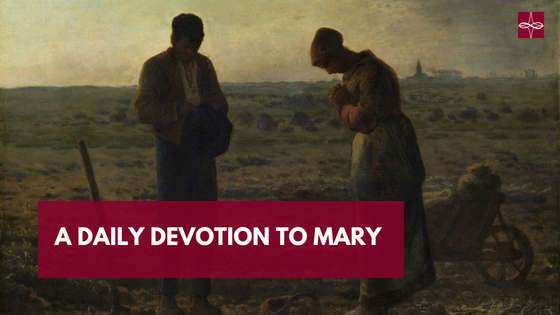
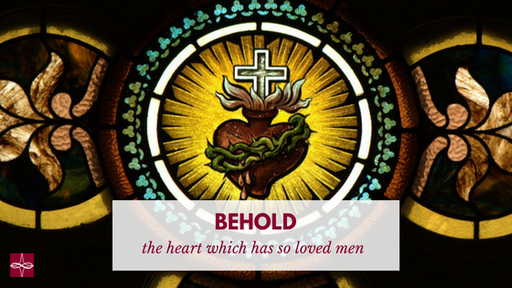

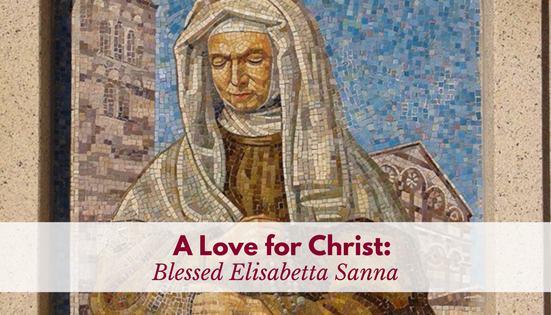

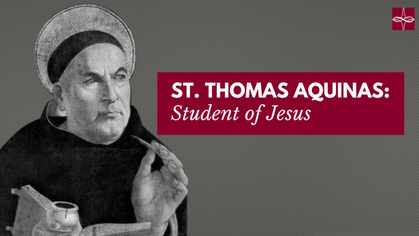

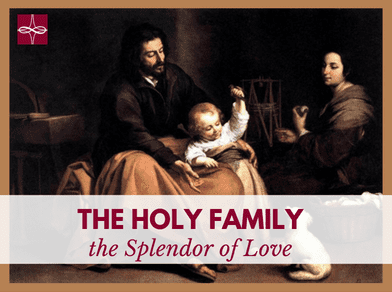


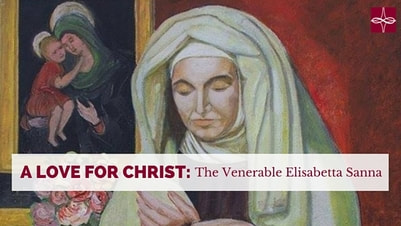

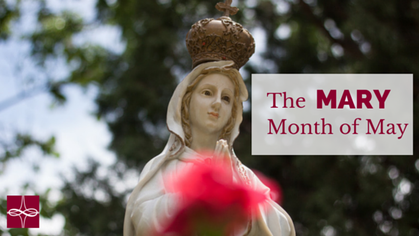

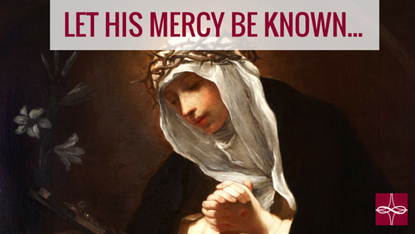





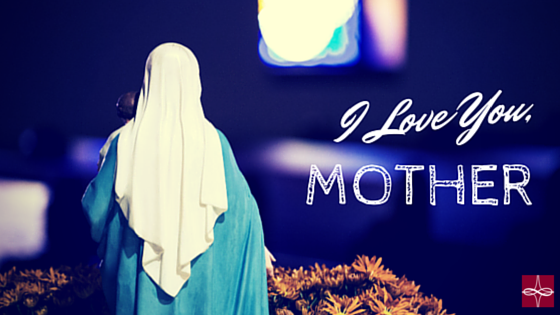





 RSS Feed
RSS Feed